Commercial Road is a long windswept major traffic artery in the East End. At first glance it is largely characterless with ugly blocks of flats built after the extensive bombing damage of the Second World War. There are also a fair number of equally ugly buildings from more recent times housing educational establishments of different kinds, small shops and an assortment of greasy spoons, curry houses and kebab joints. However, a closer, more considered look will reveal that there are still many interesting, even beautiful buildings. There are a couple of still working synagogues - remnants of the once very large Jewish presence in this area - the
Nelson Street and
The Congregation of Jacob synagogues on Commercial Road itself - both with beautiful interiors. I love the old school in Henriques Street with its byzantine style brickwork and side entrance marked "cookery and laundry". There are a few small cafes that might warrant exploration and I recently discovered that there are several art deco and modernist buildings.
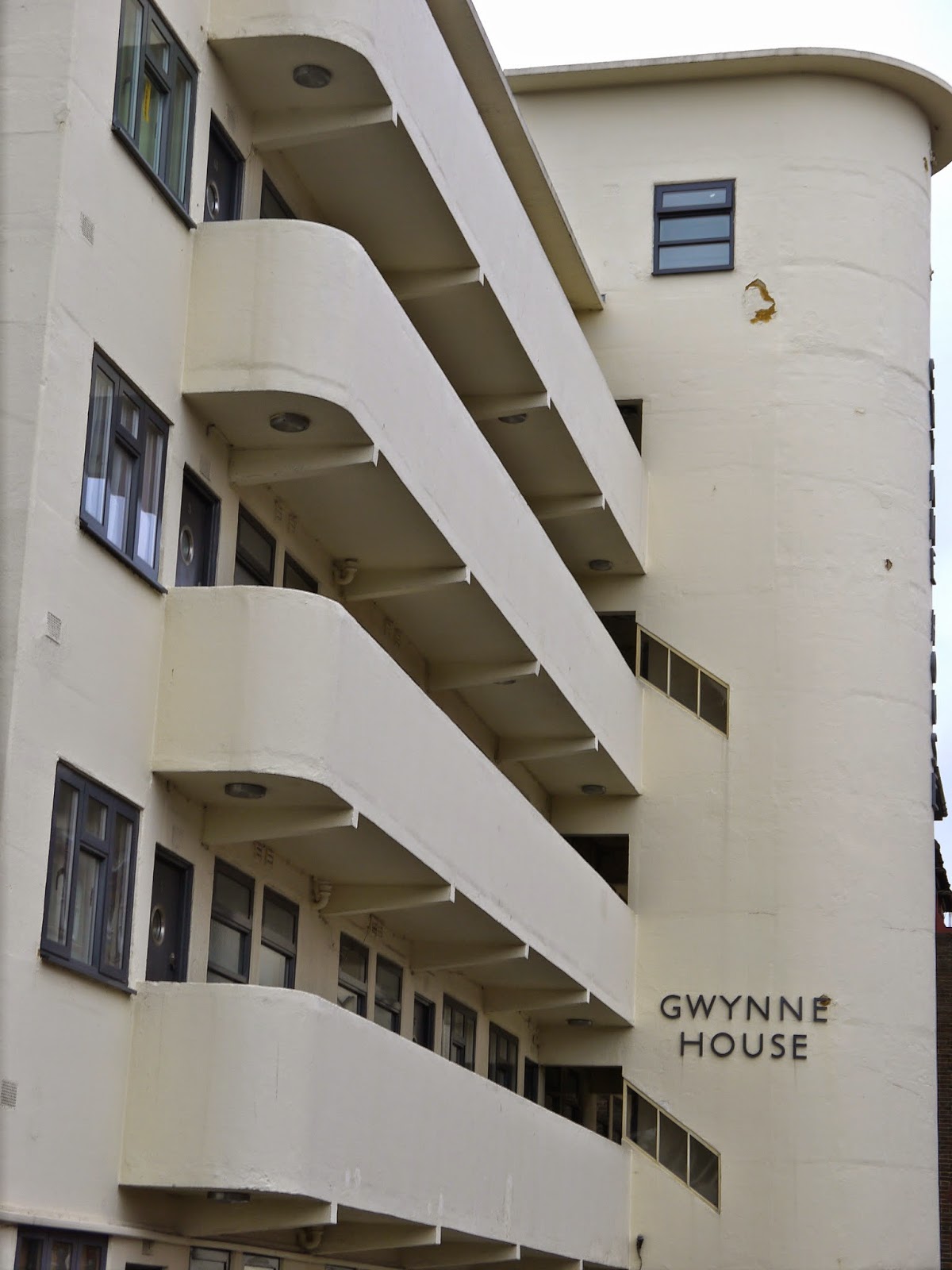 |
| Gwynne House, Turner Street |
Turner Street runs off Commercial Road and is an interesting mixture of residential properties, businesses and parts of the London Hospital. It also boasts two fine examples of modernist architecture. Gwynne House is an apartment block built in 1934 and designed by architect Hume Victor Kerr. This block would not look out of place in Miami, Tel Aviv or any of the other major art deco/ modernist cities. It is a little surprising to find it here in the east end! Those walkway/ balconies are reminiscent of the Bauhaus, whilst the stylised lettering and sloping windows in the curved stairwell also add character.
Formerly serving as subsidised accommodation for nurses and trainee doctors, the block was renovated in 2012 and is now a very desirable private address with two bedroomed flats selling for up to 400,000 pounds. Interestingly the Zoopla property website quotes 791,000 as the average price of a two bedroomed property in the E1 post code at the moment so Gwynne House is a bargain. Who would have thought it? At these prices the least the management company could do is repair the peeling paintwork on the stairwell!
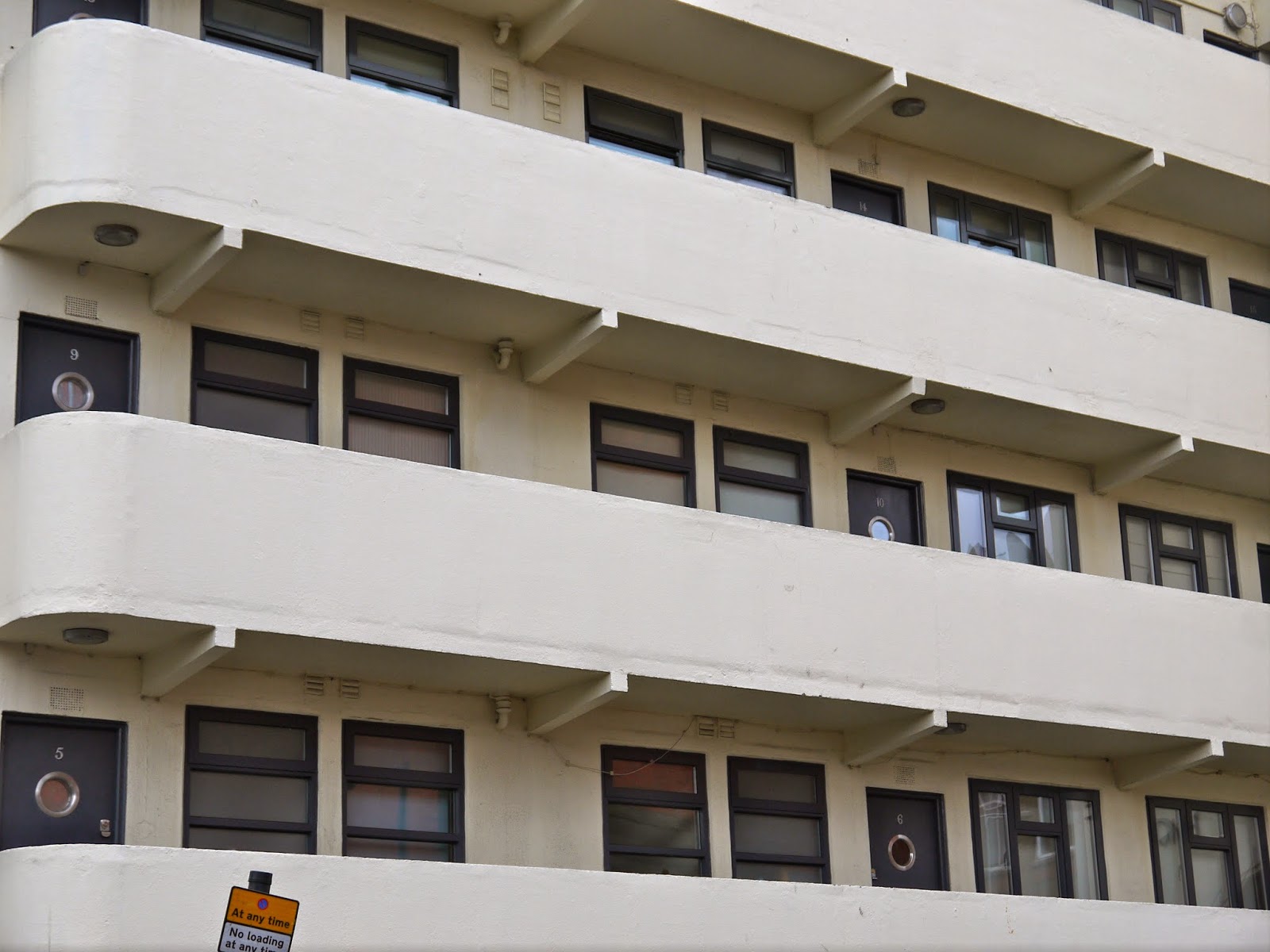 |
| Gwynne House, Turner Street |
 |
| Gwynne House, Turner Street |
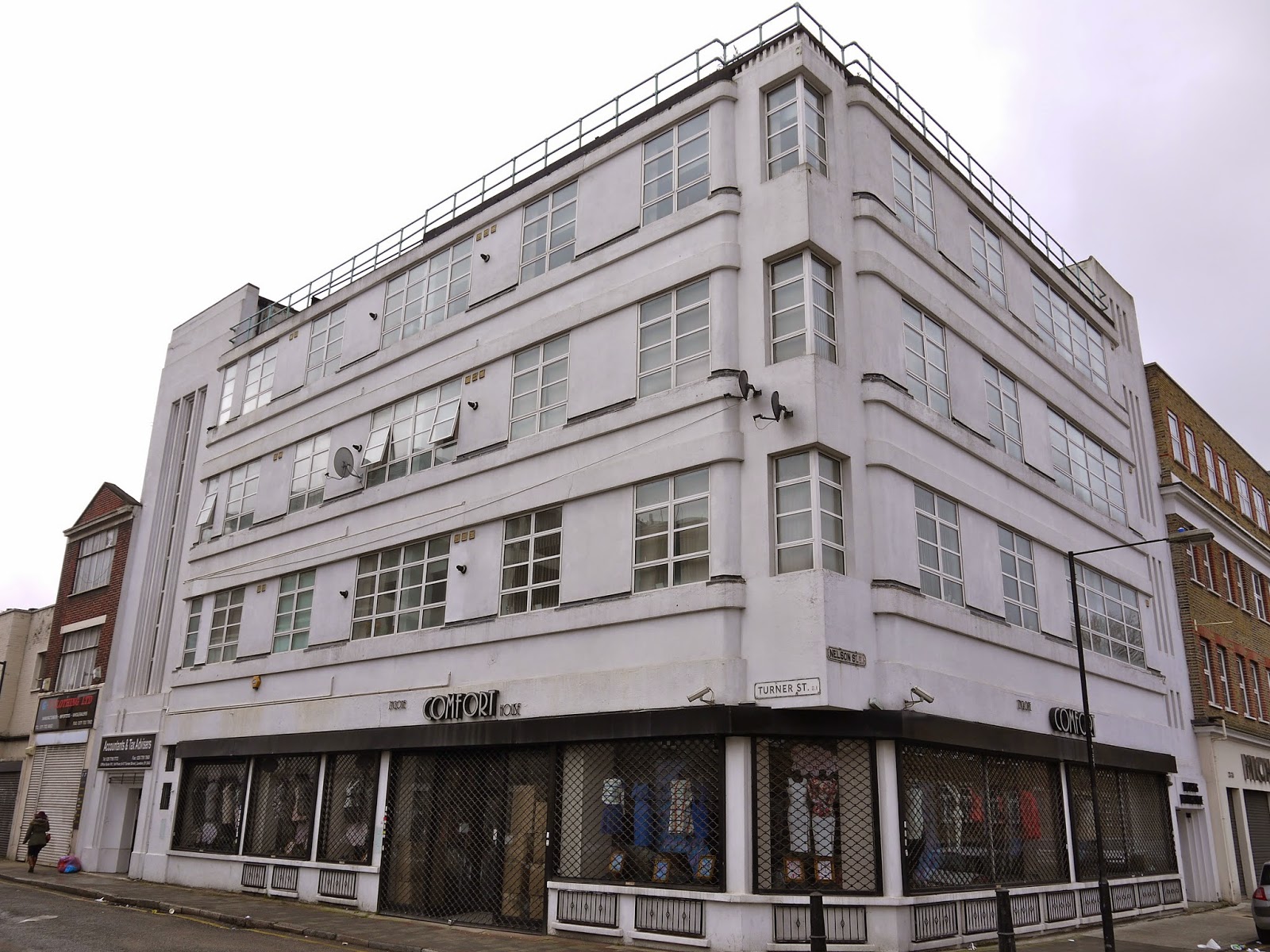 |
| Comfort House, Turner Street |
Our friend Hume Victor Kerr was also responsible for Comfort House which stands on the corner of Turner Street and Nelson Street. Completed in 1932 as a factory and showroom for gown manufacturer M. Levy, the building retains its links with the rag trade today with commercial units on the ground floor and residential properties above. The original windows have gone which is a shame but Comfort House still has a striking presence with its white rendering, tall square cut towers, sharp angled corner and slightly projecting bands of windows with curved ends. There is a recessed "works entrance" in Turner Street, labelled with stylised lettering.
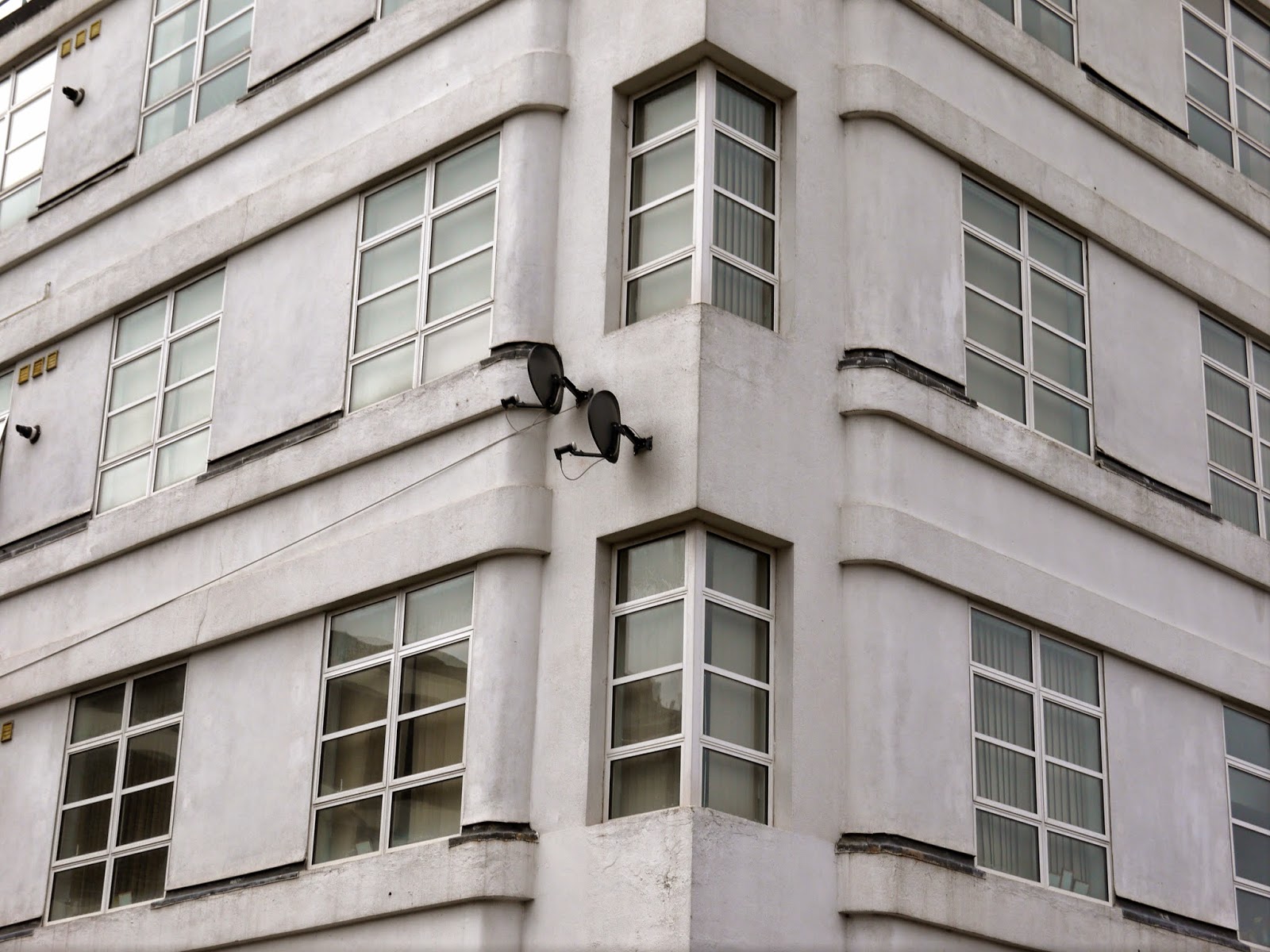 |
| Comfort House, Turner Street |
 |
| Comfort House, Turner Street |
Back on Commercial Road, at the junction with Philpott Street stands another gem from the 1930's. Cheviot House was designed by G.G. Winborne for textile merchants Kornberg and Segal. Completed in 1937, by 1948 the company had gone and the building became Stepney Town Hall for several years. Although badly neglected now, it is still possible to imagine how grand this building must have looked in the 1930's with the squared off glazed edges, concrete panels between floors and decorative wave details around the doors. Shamefully unlisted, Tower Hamlets Council considered demolition a few years ago to make way for a new residential development. That seems to have gone quiet now, but the Council has a poor record of caring for the built heritage having demolished another deco gem, Eden House, a few years ago. Cheviot House requires a suitable, sustainable use and a sympathetic restoration if it is to survive.
 |
| Cheviot House, Commercial Road |
 |
| Cheviot House, Commercial Road |
 |
| Cheviot House, Commercial Road |
The Troxy cinema at 490 Commercial Road opened in 1932 with 3,520 seats, a revolving stage, a wurlitzer organ and a cafe/ restaurant located on the circle foyer level. It's first screening took place on 11th September 1933 and featured Fay Wray in
King Kong. As well as screening Hollywood blockbusters, it also hosted live performances by such stars as Vera Lynn and the
Andrews Sisters. Closed as a cinema in 1960 due to declining audiences as the community drifted away to other parts of the city, the final screening was
The Siege of Sidney Street with Donald Sinden.
Sidney Street is of course a short step from the Troxy. The building then lay empty for a few years until the London Opera Centre took it over from 1963 to 1976. As with many large old cinemas, the Troxy went on to serve as a bingo hall before closing again in 2006.
Designed by
George Coles and once part of the
Gaumont group of cinemas, the Troxy was listed as with Grade II status in 1991 and retains some of its original features although others have been lost. The exterior features include decorative "vegetation" as well as black and gold panelling and two large fans on each side of the entrance. The fans are disappointingly made of unattractive plastic and are clearly not original. Nowadays the former cinema is a hireable venue and only open when events are taking place. However, it is possible to peep through the front windows and see the very nicely preserved lobby and former ticket counter.
 |
| The Troxy, Commercial Road |
 |
| The Troxy, Commercial Road |
Moving away from Commercial Road, across Whitechapel High Street towards Spitalfields there is another art deco beauty, the former Godfrey Phillips and Son Tobacco Works, designed by W. Gilbee Scott and B.W.H. Scott. Now known as The Exchange, 132 Commercial Street (not road!) dominates the northern end of the street through its sheer size. It has been revitalised in recent years with residential on the upper floors and a range of shops at ground level. Its faience frontage which has been described as "restrained art deco" gives it an air of sophistication that would make it seem at home in Manhattan or in the Berlin of the early 1930's. The main entrance has an impressive arch and is topped with a clock.
 |
| The Exchange, Commercial Street |
 |
| The Exchange, Commercial Street |
 |
| The Exchange, Commercial Street |
I have also found two other interesting examples of art deco in this part of London. The first is a building in Liverpool Street about which I have been unable to find any information. Like the Exchange building it has a faience facade - although only at the upper level. It also has a clock - in the same style as the Exchange, so perhaps they are contemporaries of each other. Does anyone know anything about it?
And finally, on Brick Lane, there is still a glimpse of the now long gone Mayfair Cinema. It opened in 1936, operating as an Odeon from 1950 until 1967 when it began to show Bollywood movies. It has since been a shop and an indoor car park (!) before being almost completely demolished in 1990 and emerging as Indian restaurant Cafe Naz, also now closed. All that remains is the original sign. Let's hope the other buildings in this post don't meet the same fate.
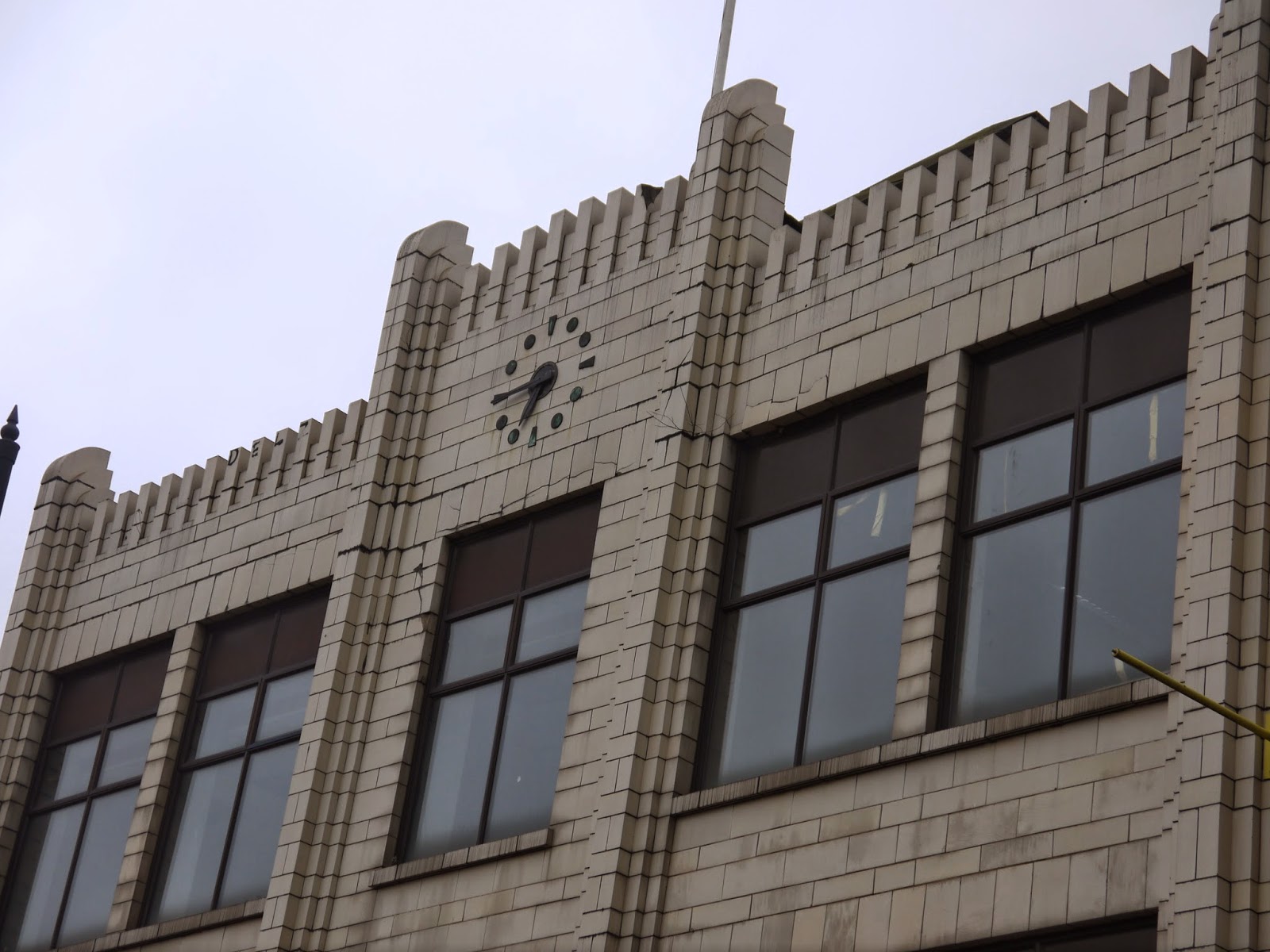 |
| Mystery building, Liverpool Street |
 |
| Former Mayfair Cinema, Brick Lane |
You might also like
The Genesis, best cinema in the East End and
A Cold Sunday in Spitalfields







Hi Adrian - I do some stuff for the East End Waterway Group - you can see our newsletter here http://j.mp/eewg_Jan .
ReplyDeleteOur next newsletter will feature Cheviot House (under threat of disposal by LBTH) WE would like to ask permission to use a couple of your pictures. EAST.END.WATERWAY.GROUP@gmail.com
Hello. Yes, that's fine. I have also emailed you - can you confirm receipt of my email please?
DeleteRegards
Adrian
great stuff, Adrian
ReplyDelete